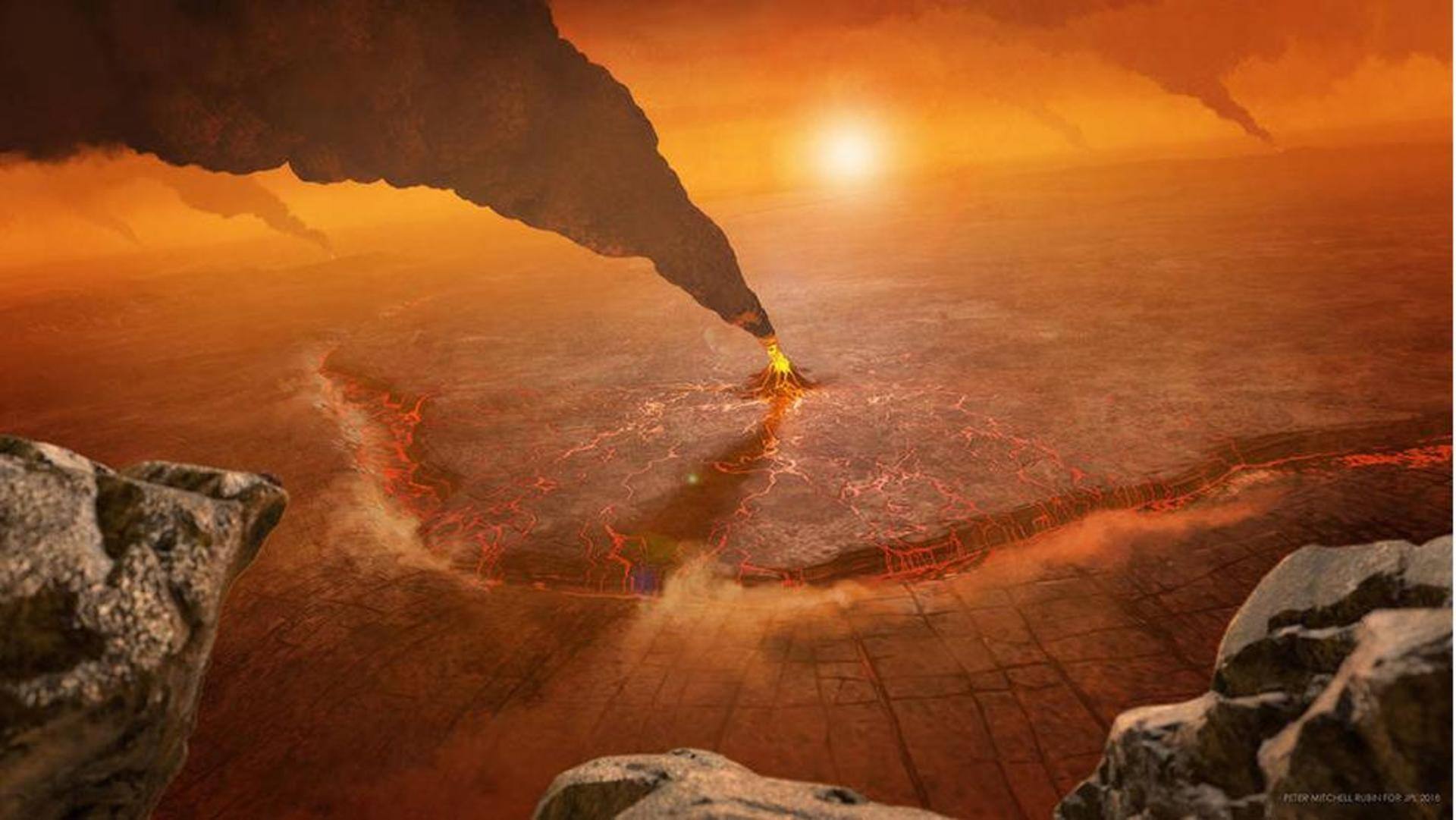
Study sheds light on the mysterious happenings on Venus's surface
What's the story
It is well-understood how Earth loses its heat but that is not the case with our neighboring planet, Venus. A new study, published in the journal Nature Geoscience, has probed into how Venus cools and found that the thin regions of the planet's uppermost layer could hold the answer. For this investigation, researchers consulted 30-year-old data from NASA's Magellan mission.
Context
Why does this story matter?
Venus is also called Earth's twin because it is rocky, about the same size, and shares similar rock chemistry as our home planet. One would assume that both Venus and Earth should be losing their internal heat to space at about the same rate but that is not so. The latest study provides a clearer picture of the happenings on our closest neighbor planet.
Earth
How does Earth lose its heat?
Earth has a hot core that heats the surrounding mantle, which then conveys the heat up to Earth's rigid outer rocky layer, called the lithosphere. The heat is then released to space, which helps cool the uppermost region of the mantle. This mantle convection process, which transfers heat, drives tectonic processes on the surface and keeps the mobile plates in motion.
Information
Venus does not have tectonic plates
Venus, on the other hand, does not have tectonic plates. As a result, how the planet loses its heat and the processes which shape its surface have not been completely understood.
Data
Researchers analyzed the quasi-circular geological features on Venus called coronae
On the basis of the observations made by the Magellan spacecraft in the early 1990s, researchers analyzed the quasi-circular geological features on Venus called coronae. For the study, the team made new measurements of coronae visible in the Magellan images and concluded that coronae were prone to be located where Venus' lithosphere is at its thinnest and most active.
Information
Our view on Venus's lithosphere is now evolving: NASA
"For so long we've been locked into this idea that Venus' lithosphere is stagnant and thick, but our view is now evolving," said Suzanne Smrekar, a senior research scientist at NASA's Jet Propulsion Laboratory in Southern California.
Study
The team focused on 65 previously unstudied coronae
The team focused on 65 previously unstudied coronae that measure up to a few hundred kilometers across. They measured the depth of the trenches and ridges around each corona, in order to calculate the thickness of the surrounding lithosphere. The researchers found that the ridges were spaced more closely together in areas where the lithosphere is more flexible, or elastic.
Modeling
Average lithosphere thickness around each corona was about 11 kilometers
By means of computer modeling, the team determined that the average thickness of the lithosphere around each corona is about 11 kilometers, much thinner than the estimates provided by previous studies. Further, these regions were found to have an estimated heat flow that is greater than that of Earth's average, which suggests that the coronae are geologically active.
Information
Regions of thin lithosphere allow significant heat to escape
"While Venus doesn't have Earth-style tectonics, these regions of thin lithosphere appear to be allowing significant amounts of heat to escape, similar to areas where new tectonic plates form on Earth's seafloor," said Smrekar.
Craters
Venus is covered in old craters
Here comes the interesting part. To calculate how old the surface of a celestial body is, scientists count the number of visible impact craters. For tectonically active planets like Earth, these craters are erased by geological processes like the subduction of continental plates or are covered by molten rock from volcanoes. Venus, since it lacks tectonic activity, should be covered in old craters.
Information
Scientists estimated that the surface of Venus is relatively young
By counting the number of Venusian craters, scientists have concluded that the surface of Venus is relatively young. Recent studies indicate that the youthful appearance of Venus could be because of volcanic activity. The latest research further supports this finding.
Official words
"Venus provides a window into the past"
"What's interesting is that Venus provides a window into the past to help us better understand how Earth may have looked over 2.5 billion years ago. It's in a state that is predicted to occur before a planet forms tectonic plates," said Smrekar. NASA is planning a mission, called VERITAS (Venus Emissivity, Radio Science, InSAR, Topography, And Spectroscopy) to probe the planet.